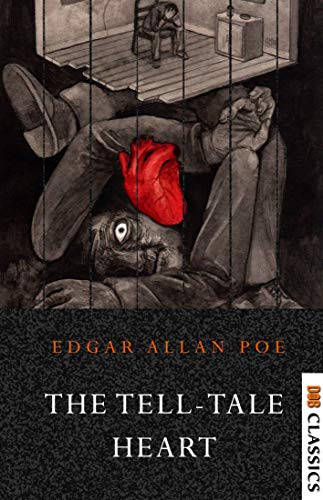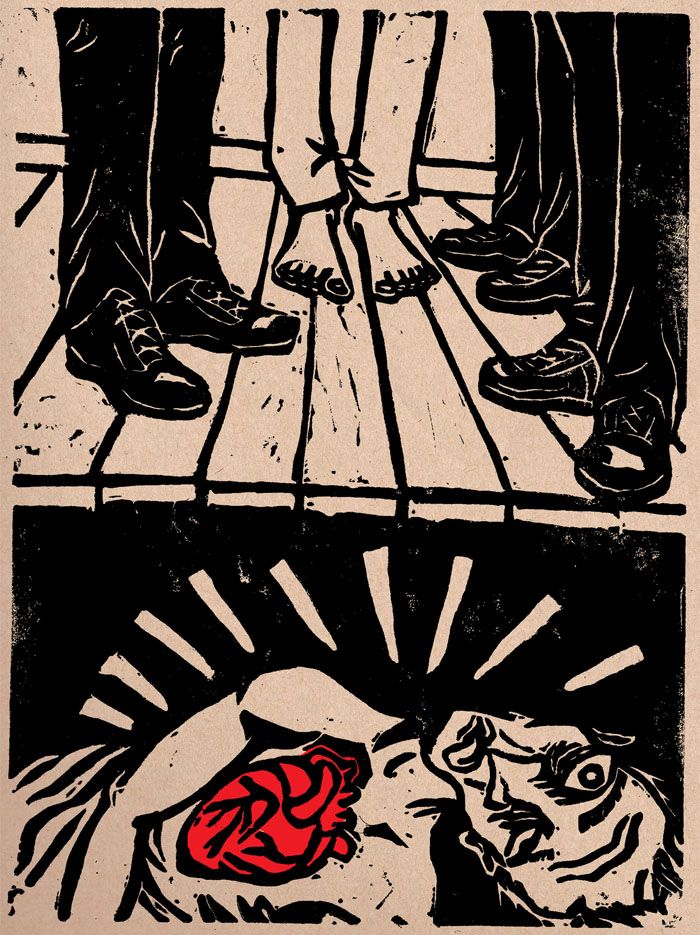The Tell Tale Heart is among Poe’s most famous short stories. It provides a dark and bleak exposition by an unnamed character who narrates how he successfully murders and their ultimate delirious confession from guilt’s torment. The narrator’s motiveless action arouses the readers’ curiosity about the storyteller’s mental state and the relationship with the old man he murders.
Like most of his literary works, Poe uses character development, imagery, gothic elements, and other literary devices to describe the emotions of the unnamed individual as he carries out the murder of an innocent man. As Poe ties together how the unnamed individual attempts to conceal his crime, he makes the story key in the literacy work where Poe demonstrates how insanity can hold hostage the human mind, and rob them of the ability to perceive or rationalize reality for what it is.
Character Development
Through the character development of the unnamed main character, Poe shows how he gradually begins to lose touch with reality. Initially, Poe does not characterize the narrator as he does not provide their relationship with the old man or give him a name. Poe writes about the narrator who believes that he is not mad, although he is motivated to murder an innocent man because his eyes frighten him.
In the first paragraph, the readers can already detect the narrator’s mental instability as he acknowledges his mental condition, although he does not admit to being mad. The narrator begins by saying, IT’S TRUE! YES, I HAVE BEEN ILL, very ill… But why do you say that I am mad?” (Poe). The narrator admits to his dreadful nervousness, which he believes works to sharpen his senses but not to dull or destroy them. Nonetheless, the narrator’s denial of madness is proved wrong as the story unfolds to reveal that he is mad.
The narrator’s sensitivities make him sense and see things in hell, heaven, and on earth, and things that other people are not aware of. The narrator says, “I could hear sounds never heard before. I heard sounds from heaven, and I heard sounds from hell!” (Poe). The narrator’s overly-sensitivity that progresses throughout the story becomes his obsession with his victim’s eyes and what Poe uses to develop the narrator’s character from his initial focus with the old man to the moment he murders him.
Consequently, the narrator loses touch with reality, and his mental state deteriorates as the guilt for his actions haunts him through his insanity.
Imagery
Moreover, Poe uses imagery to prove how insane the narrator is starting to become. Notably, the imagery Poe applies is auditory imagery that makes the narrator sound paranoid, obsessive, and mad such that a reader almost sympathizes with his plagued disposition. Unlike visionary imagery, auditory imagery makes sense in this narration because the events unfold in darkness in the dead of night.
As such, the auditory imagery exhibits the narrator’s sensitivity and provides the reader with a practical sensory experience relevant to the story’s setting. Furthermore, as a literary device, auditory imagery is relevant because Poe writes the story in the first person, which outrightly begins from the first sentence. The reader hears the images throughout the selections of words that provoke the hearing sense like “groan”,” creak”, “crying out”, “creaked”, and “dreadful echo” among others.
The climax of the application of auditory image is where the narrator says that he hears the old man’s terrified heart beating which triggers the narrator towards murder, marking the deterioration of his mental status. “—now, I say, there came to my ears a low, dull, quick sound, such as a watch makes when enveloped in cotton. I knew that sound well too. It was the beating of the old man’s heart. It increased my fury, as the beating of a drum stimulates the soldier into courage” (Poe).
The narrator does not hear the beating until after he kills the old man. The drum beating is the narrator’s undoing and the climax of his deteriorating mental health. When the police confront the narrator, the composure and calm boldness he depicts crumbles as the sound of a beating heart is heard again.
The narrator asserts, “Suddenly I knew that the sound was not in my ears, it was not just inside my head. At that moment, I must have become entirely white. I talked still faster and louder. And the sound, too, became louder…(Poe). Undoubtedly only a mentally disturbed person can hear a dead man’s heartbeat.
Atmosphere gothic is a device Poe applies and uses alongside imagery to show how the narrator’s mental state deteriorates throughout the story. Like most of Poe’s writings, the device manifests in the Tell-Tale Heart by offering a tense and dark atmosphere that foretells tragedy.
The setting is solely occupied by the old man and one that the narrator frequents. Although Poe does not provide many details about the setting, he uses the narrator’s behavior and actions to convey ominous and dreary images to the readers and create tension throughout the story. Besides, Poe provides the reader with the sense of foreboding of the supernatural through the ‘evil eye’ the narrator seems to dread.
The narrator admits, “His eye was like the eye of a vulture, the eye of one of those terrible birds that watch and wait while an animal dies, and then fall upon the dead body and pull it to pieces to eat it (Poe). In most communities, the eye is a symbol of power. In the story, the old man’s eye holds some power against the narrator and is central to the narrator’s fear, paranoia, and insanity so much that he considers it evil.
Poe applies visionary imagery in the instances that rely on sights, such as the various descriptions involving the use of light and darkness. Like other scary narrations, Poe incorporates the play of darkness and light exemplified by the old man’s fear of darkness when he wakes up, the light that shines on the old man, and the shadows in the room when the police arrive. Poe paints pictures for the reader through the description to keep them engaged and to show how the narrator’s mental health gradually declines.
Conclusively, The Tell-Tale Heart story uses the development of the character, gothic imagery, and symbolism to depict the theme of insanity. Amidst his failing mental health, the narrator becomes obsessed and murders the old man such that he is driven to total insanity by the heartbeat of the dead old man.
Undoubtedly, the narrator’s total insanity stems from the pressure of his guilt and manifests in the heartbeat of the dead old man as Poe highlights through imagery, symbolism, and how he develops the narrator’s character throughout the story. In the end, the pressure of his psychological guilt leads the narrator to confess to the murder, although he maintains his initial egoistic attitude.
Works Cited
Poe, Edgar Allan, and Wolfgang Buchta. The tell-tale heart. Wolfgang Buchta, 2002.


